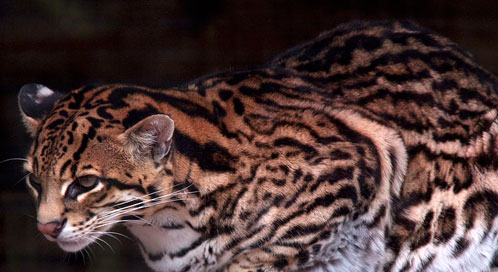 Though they may look like a more exotic version of your friendly tabby, ocelots possess the fierceness and tenacity of much larger wild felines. And like their big cat cousins, they can swim.
Though they may look like a more exotic version of your friendly tabby, ocelots possess the fierceness and tenacity of much larger wild felines. And like their big cat cousins, they can swim.
Twice the size of house cats, ocelots have spotted fur and tufted ears, and once ranged in large numbers from Arizona to Arkansas and Louisiana, covering several miles a night in their hunt for rabbits, rodents, fish and frogs. But the fur and pet trades decimated the population, and fewer than 100 ocelots remain in the United States, mostly in four national wildlife refuges in Texas.
Today this endangered cat's biggest threat is habitat loss caused by the expansion of agricultural lands, highways and the new wall at the Mexican border, a barrier that isolates breeding populations from one another. To ensure the ocelot's future, we need to protect its habitat. Only then will this striking little survivor reclaim its rightful place in nature.
–Julian Notaro
Making A Difference
To prevent the U.S. Border Patrol from further disturbing ocelot habitat and behavior, Defenders prevented the installation of large tracks of lights along the Mexican border, and is working to stop destructive mining proposals in the Santa Rita and Patagonia mountains in Arizona. Defenders is also pushing the U.S. Fish and Wildlife Service to begin developing a science-based recovery plan that points the ocelot down the road to recovery.
Only select articles from Defenders are available online. To receive 4 issues annually of the full award-winning magazine, become a member of Defenders of Wildlife!

